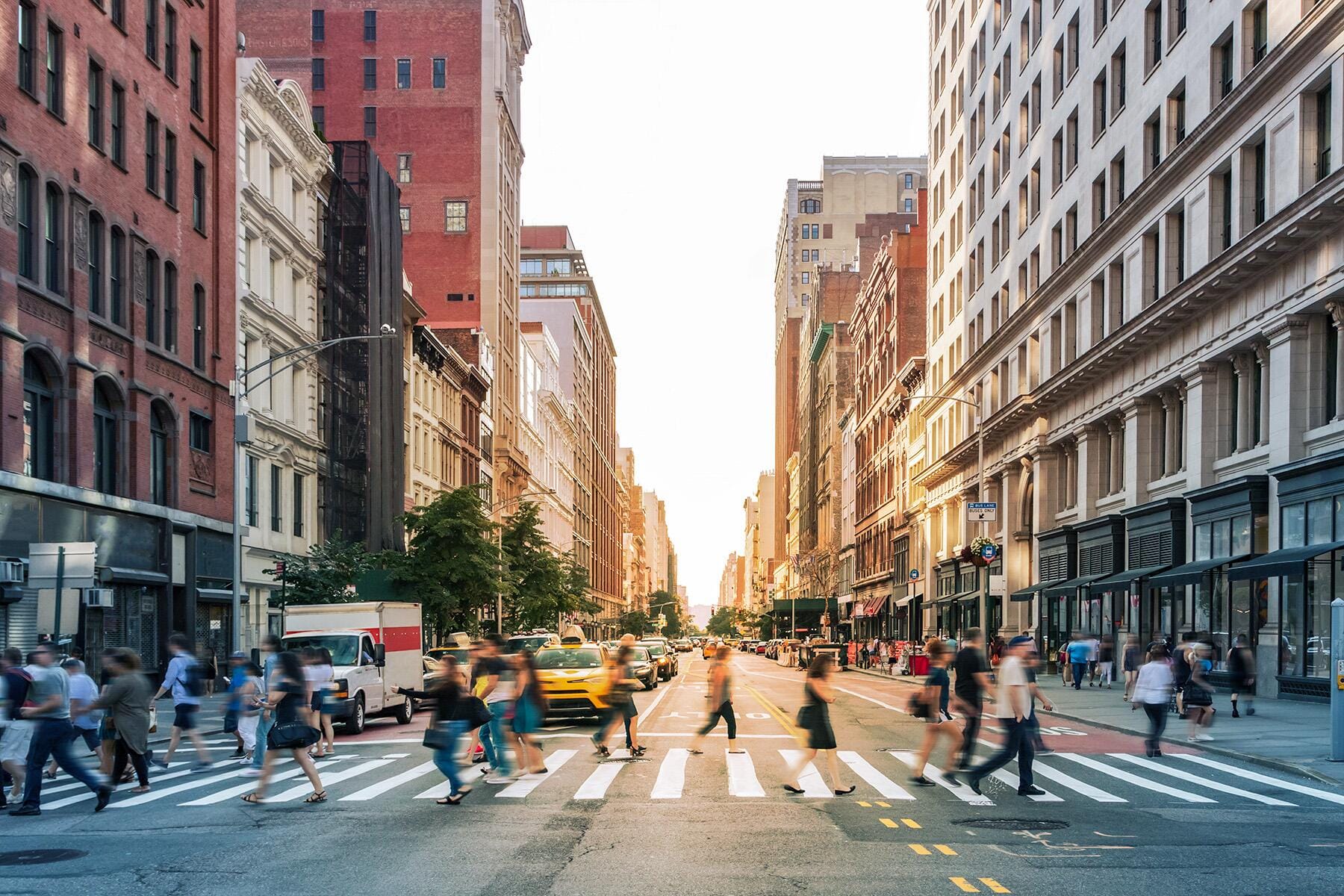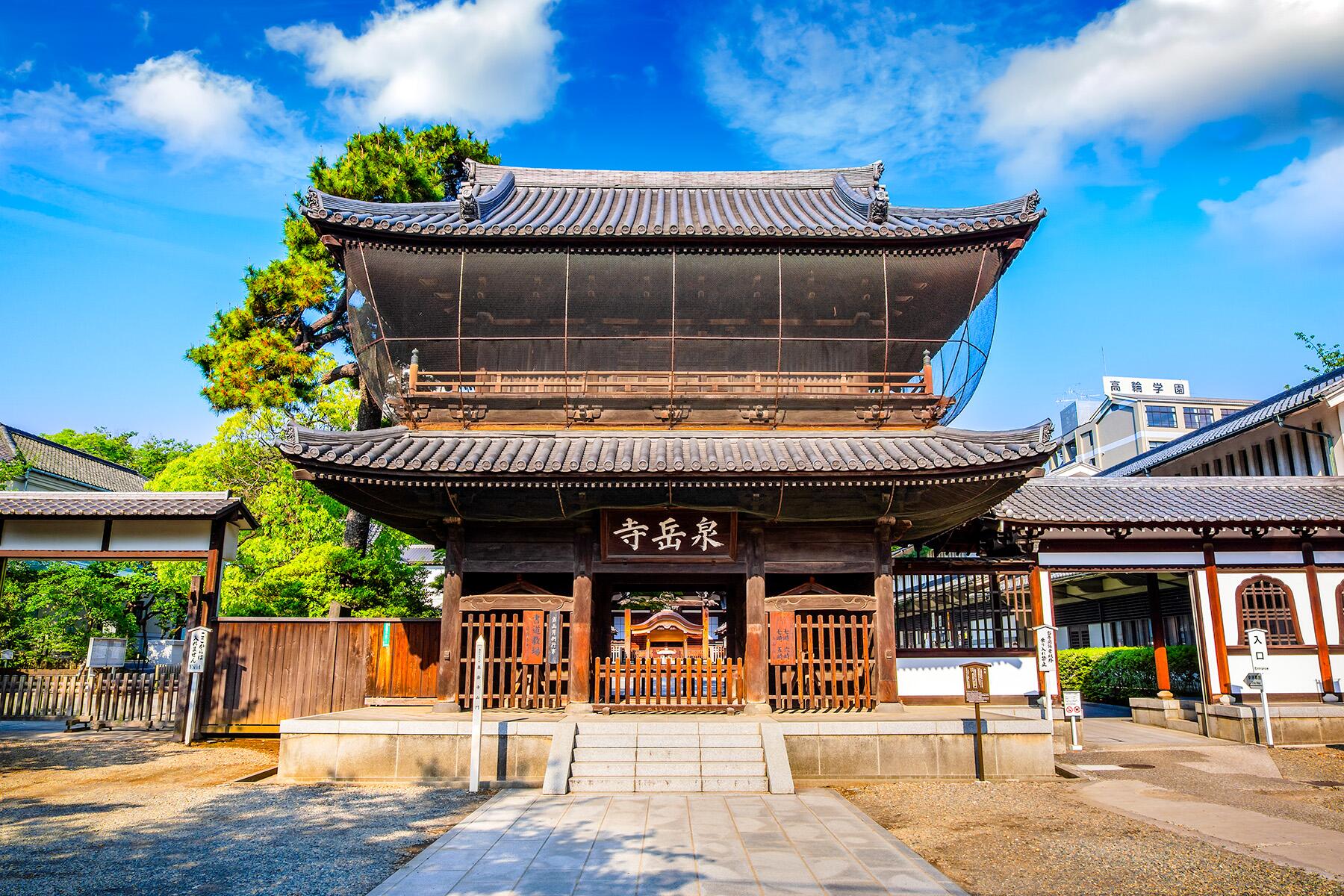Visitors to one of Tokyo’s prettiest temples will learn it is home to a unit of ghostly samurai.
A decapitated head is a unique gift, to say the least. Yet that is just what 47 samurai presented to their late master as a mark of respect. This extraordinary, violent tale is embedded in the serene grounds of one of Tokyo’s prettiest temples.
Those warriors and the man they venerated are buried at Sengakuji, a sprawling Buddhist temple that’s one of the Japanese capital’s most overlooked attractions. Japan has two national religions—Shinto and Buddhism—and Tokyo is cloaked in more than 100 Shinto shrines and Buddhist temples.
The History of Sengakuji
Tourists inundate Tokyo’s best-known religious sites, such as Sensoji Temple, Meiji Shrine, Tennoji Temple, and Toshogu Shrine. Comparatively few travelers visit 400-year-old Sengakuji, likely due to its less convenient location.
Sengakuji sits in a quiet, suburban area of this city’s Minato ward. The key attractions of Minato include the lofty Tokyo Tower, the National Art Center, the majestic Zojoji temple, the tranquil Shiba Park, and the shopping and entertainment district of Roppongi Hills.
Further south of those sites lies Sengakuji. The easiest way to visit this temple is by rail, with a station of the same name just a few minutes walk away. After strolling past a cluster of high-rise apartments, tourists will see a large wooden gate that marks the entrance to this temple.
Recommended Fodor’s Video
Once they pass beneath it, they’ll encounter the main gate, an even larger, two-story structure with a small sign alongside it. In both the English and Japanese languages, it explains that Sengakuji was founded in the early 1600s by the first Shogun of Japan’s Edo era, Tokugawa Ieyasu.
Ieyasu established Sengakuji alongside his headquarters of Edo Castle, the remains of which are now one of Tokyo’s most-visited locations. When that temple was destroyed by fire in the 1640s, it was rebuilt about four miles to the south in its present spot.
Just a few decades later, Sengakuji became intertwined with one of the most remarkable passages of Japanese history. Known as the Ako Incident, it revolves around those 47 samurai and the head they lopped off a foe to honor their betrayed boss. It is commemorated each year on December 14 by the colorful Gishisai Festival.
On that day, people from across Tokyo and nearby cities visit Sengakuji to remember the bravery and loyalty of its 47 samurai, also known as ronin.

Samurai emerged as a great force in Japan during the late 12th century. They were not just elite warriors and military strategists, but they also created many unique elements of Japanese culture, and helped to shape politics in Japan. When tourists take part in Japan’s iconic tea ceremonies and Ikebana flower arranging, they are practicing customs that can be traced back to samurais. Those warriors honed such activities to achieve relaxation in between their deadly battles.
Senior samurais also held prominent government roles across many centuries. Others, meanwhile, were employed by the country’s feudal lords, who paid samurai handsomely to safeguard their vast riches and landholdings. Which brings us to the ronin.
The 47 Loyal Samurai
As tourists can learn at the Tokyo National Museum, about 6 miles north of Sengakuji, this term refers to masterless samurai. Ronin became commonplace in the 1800s, when Japan was amid a more peaceful period in its history, and so these warriors-for-hire were no longer in demand. While most samurais adapted to the changing times by finding new careers as government officials or tradesmen, others roamed Japan seeking a lord to serve.
It was such Ronin who drove the Ako incident. The 47 samurai who were at the center of this event are buried side by side here at Sengakuji, and their story is told by a series of plaques. In the early 1700s, they served the feudal lord of Ako, Asano Takuminokami.
Asano was asked by Japan’s shogunate government to host a group of Imperial representatives from the then-capital city Kyoto while they were visiting Tokyo. During this activity, Asano was supervised by a man named Kira Kozukenosuke. Although Asano was a samurai, he was continually disrespected by Kira.
Eventually, Asano grew so furious at these slights that he sliced Kira with his sword. Because this attack occurred within Edo Castle, where drawing a blade was banned, Asano was imprisoned and given a death sentence prior to a proper investigation. As further insult, his properties were seized, and his family was stripped of their lordship.

These excessive punishments infuriated his loyal army, the 47 samurai. Once their protests were ignored and their master died, they set about exacting revenge the way they had been trained: via extreme violence. In 1702, these ronin ambushed Kira.
Using their swords, they removed his head and brought it back to Sengakuji. There, they washed it in a well—which remains in place at Sengakuji for tourists to see—and then placed the head on the grave of their former boss, Asano. Soon, they joined him in the afterlife, committing seppuku suicide en masse.
To this day, their acts of loyalty are remembered and revered in Japan. So much so that not only has their story been the subject of stage shows, but Japanese visitors can be seen paying respects at their graves inside Sengakuji, the entrance to which is formed by a gate that was transferred from Asano’s home to the temple.
It is also common to witness locals bowing before the temple’s bronze statue of Asano. This artwork is positioned alongside the temple’s main gate, on the second floor, of which are 16 sculptures depicting Arakan Buddhist saints. Deeper inside this complex is its hub, the Hondo Hall. Visitors can admire this hall’s statue of Marishiten, the deity tasked with protecting Oishi Kuranosuke, leader of the 47 samurai.
Next to this is a huge, attractive bell, called a Bonsho, which is sounded each morning and evening. Nearby, visitors can trace their hand across the bark of the sacred Chikara Plum Tree. A monument to the son of Kuranosuke, who took part in the beheading, this tree was transplanted here from his home. So, too, was another signposted Chizome Plum Tree, said to be stained with the blood of Asano.

Finally, by the graves of the 47 samurai, tourists can spot artifacts linked to their story inside the Ako Gishi Memorial Hall. It plays a Japanese language video that colorfully retells this tale. An English language version can also be shown by request.
Regardless of whether visitors watch this film, those who pay attention to the history woven through this temple will surely be gripped and moved. More than 300 years later, the 47 samurai continue to captivate locals and tourists alike. Rarely can the act of removing a human head have garnered such long-lasting goodwill.



